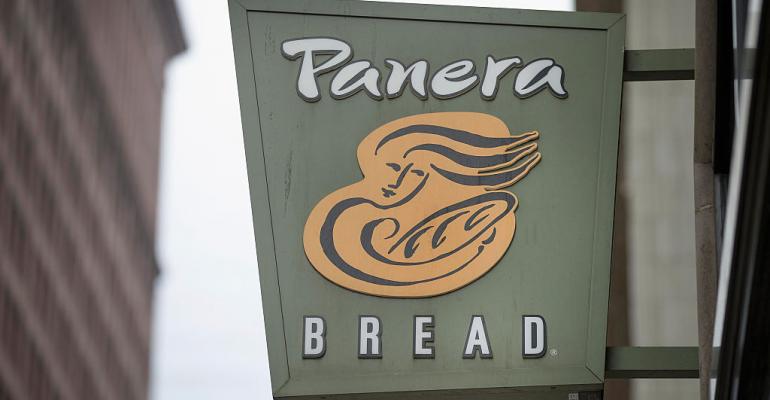 This post is part of the On the Margin blog.
This post is part of the On the Margin blog.
Anybody is for sale, as long as the price is right.
That’s the lesson so far in 2017, after a pair of buyers with no regard for traditional acquisition metrics paid top dollar for two of the best performing restaurant chains in the modern era.
On Wednesday morning, JAB Holding Co. agreed to pay $7.5 billion for Panera Bread Co., a company with a booming stock price and improved performance that wasn’t for sale until it was.
That deal followed the sale of Popeyes Louisiana Kitchen to Burger King and Tim Hortons owner Restaurant Brands International Inc., for $1.74 billion.
Both are among the biggest deals in industry history, in terms of total dollars — the Panera deal, in fact, is the second biggest in history behind the 2014 acquisition of Tim Hortons by Burger King. That deal created … Restaurant Brands International.
Yet what sets these acquisitions apart is the multiple. Analysts and investment bankers measure deal size based on a multiple of earnings. The higher the multiple, the more confidence the buyer has in the growth prospects of its target.
The multiple JAB is paying for Panera is 19.5 times cash flow. That was bested this year by the Popeyes deal, which went for a multiple of 21.
Both are exceedingly high. The Popeyes multiple might have been the most expensive price paid for a restaurant chain.
Yet that was also what was necessary for the buyers to get their targets. Both Popeyes and Panera were strong performing concepts with a lot of growth potential. So both RBI and JAB had to reimburse investors for the potential stock price growth they’d miss by selling out now.
Also, prices for restaurant chains have increased in recent years.
Yet the price also demonstrates that these buyers see potential well beyond traditional norms.
Both JAB and RBI are clearly willing to hold onto their targets for a long time. That will enable them to reap the rewards of growth strategies, and giving them longer to make their money back.
In Popeyes, RBI clearly sees potential in its international growth strategies — which has been its MO since 3G Capital acquired Burger King back in 2010.
In Panera, JAB also gets a company with a lot of potential. Panera is among the most innovative restaurant companies in the U.S., certainly in terms of digital strategies. Its Panera 2.0 initiative, complete with a digital backbone, kiosks and an app, has generated strong same-store sales at company restaurants — including 5.3 percent in its most recent quarter. It is now looking at delivery.
Yet the fast-casual chain, with about 2,000 locations, has relatively few locations outside of the U.S., which could provide years of revenue and earnings growth for its new owner. The company could also refranchise more locations in the U.S., though it’s not clear whether JAB would employ such a strategy.
Still, the strong, long-term earnings potential would make it easy for JAB to make a profit on that multiple, whereas it would be far more difficult for a traditional investment group with a five-year timeline.
And in Panera, JAB sees a company that fits well with its coffee-and-carb investment strategy. In recent years, the Luxembourg-based privately held investment fund has acquired Einstein Noah Restaurant Group, Caribou Coffee, Stumptown Coffee Roasters, Intelligentsia Coffee, Krispy Kreme Doughnuts Inc., Peet’s Coffee & Tea and Keurig Green Mountain.
The willingness of RBI and JAB to pay such multiples for restaurant targets is one, big reason why this will be — and already is, in fact — a huge year for restaurant mergers and acquisitions. There have been several deals already, including the sale of Bob Evans Restaurants to Golden Gate Capital, Checkers to Oak Hill Capital Partners, Cheddar’s Scratch Kitchen to Darden Restaurants Inc., and the aforementioned Popeyes.
Meanwhile, several chains are still for sale, including Bravo Brio Restaurant Group Inc., Ruby Tuesday Inc., and Ignite Restaurant Group Inc.
The restaurant industry is competitive. Restaurants are coming off a year in which sales and traffic were difficult to come by. With labor costs growing, many may believe that becoming part of larger organizations might be the best, overall strategy.
“With restaurant operators facing a highly competitive market for traffic and new unit growth, plus the rising tide of labor, we believe that consolidation may remain a theme as larger companies search for revenue growth and operational leverage,” Canaccord Genuity Analyst Lynne Collier said in a note this morning.
Jonathan Maze, Nation’s Restaurant News senior financial editor, does not directly own stock or interest in a restaurant company.
Contact Jonathan Maze at [email protected]
Follow him on Twitter at @jonathanmaze





